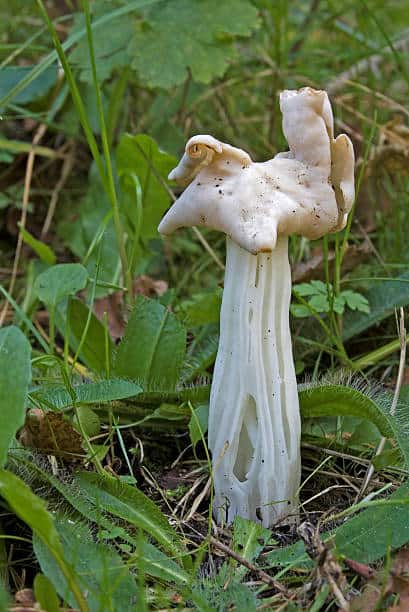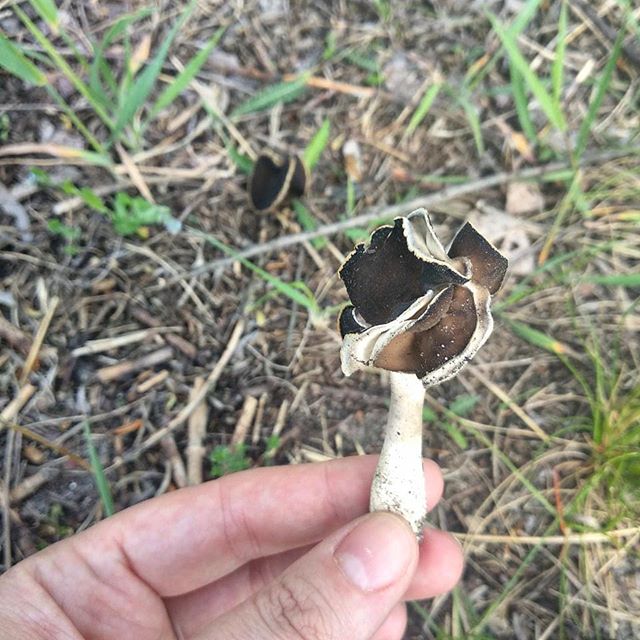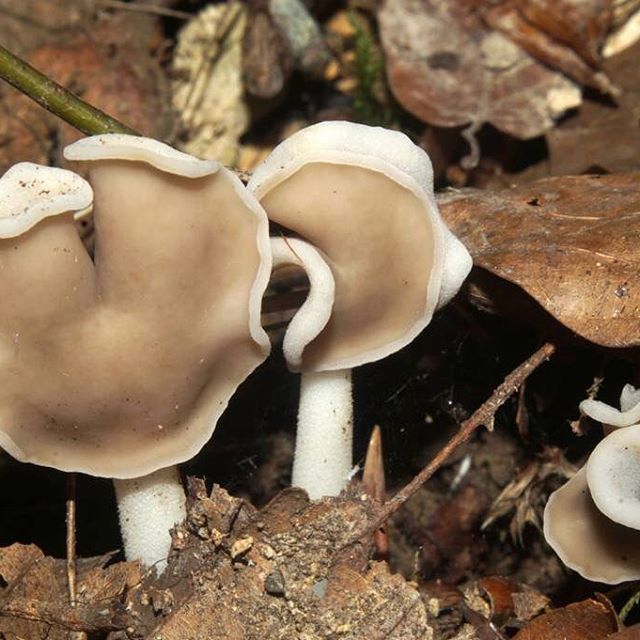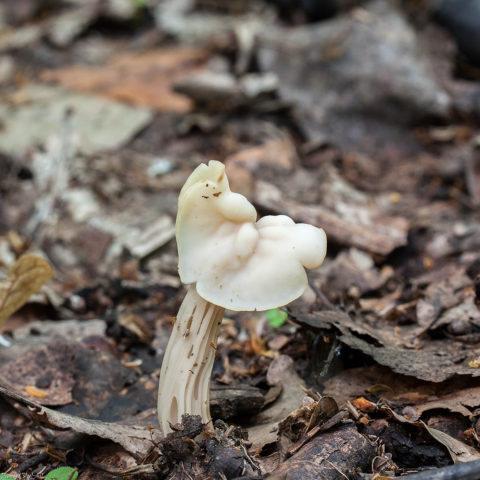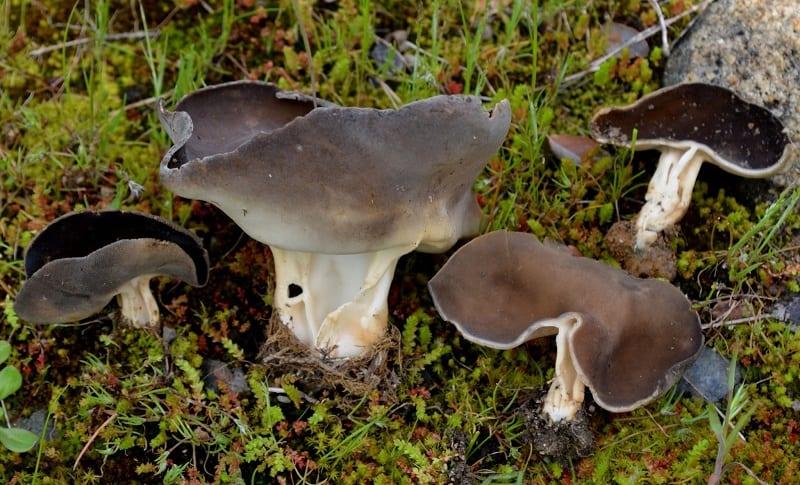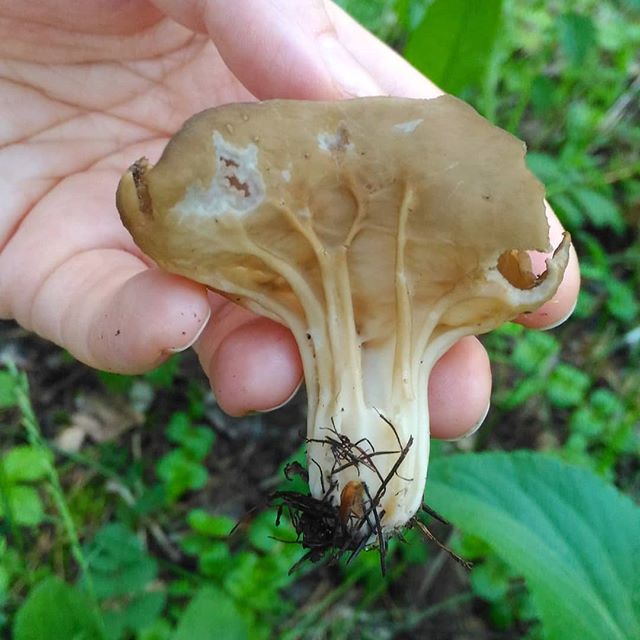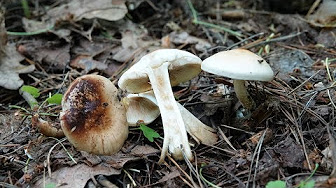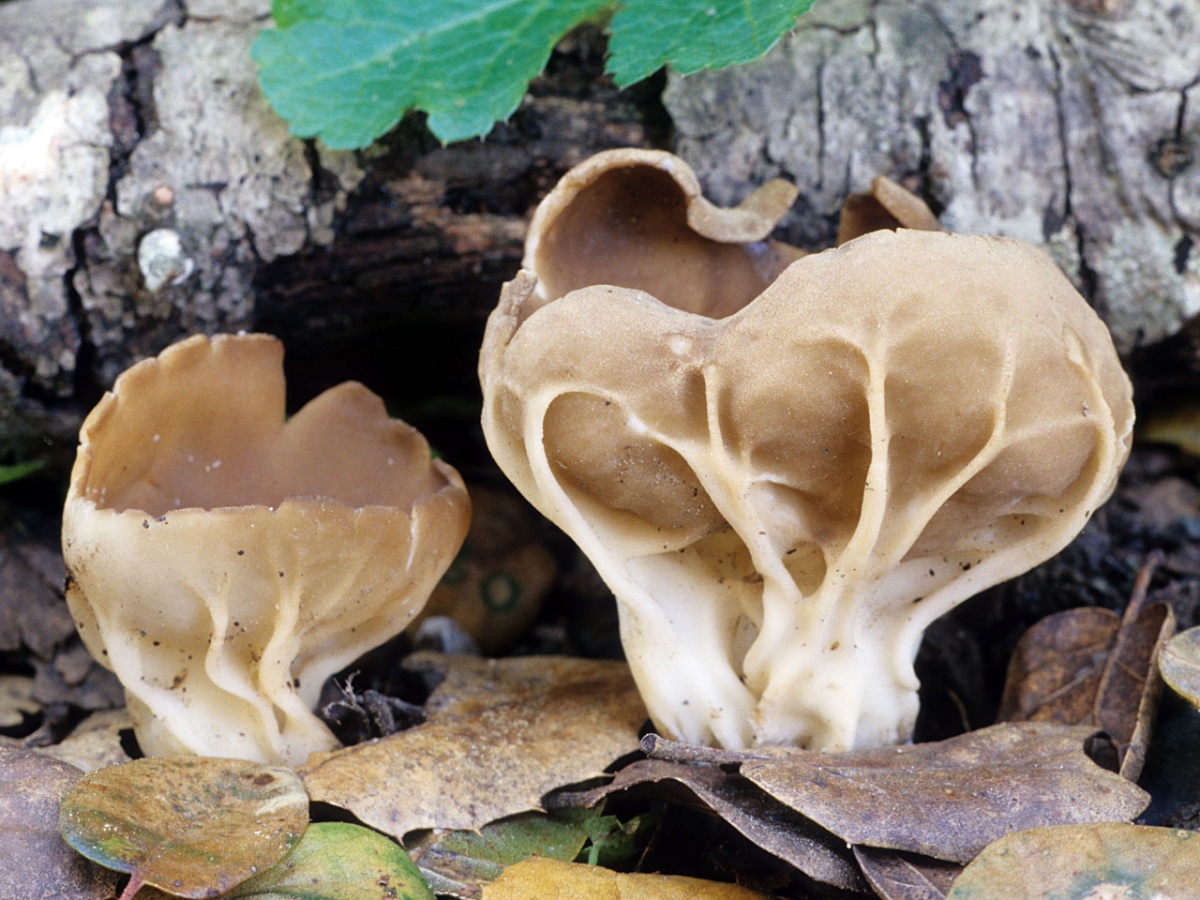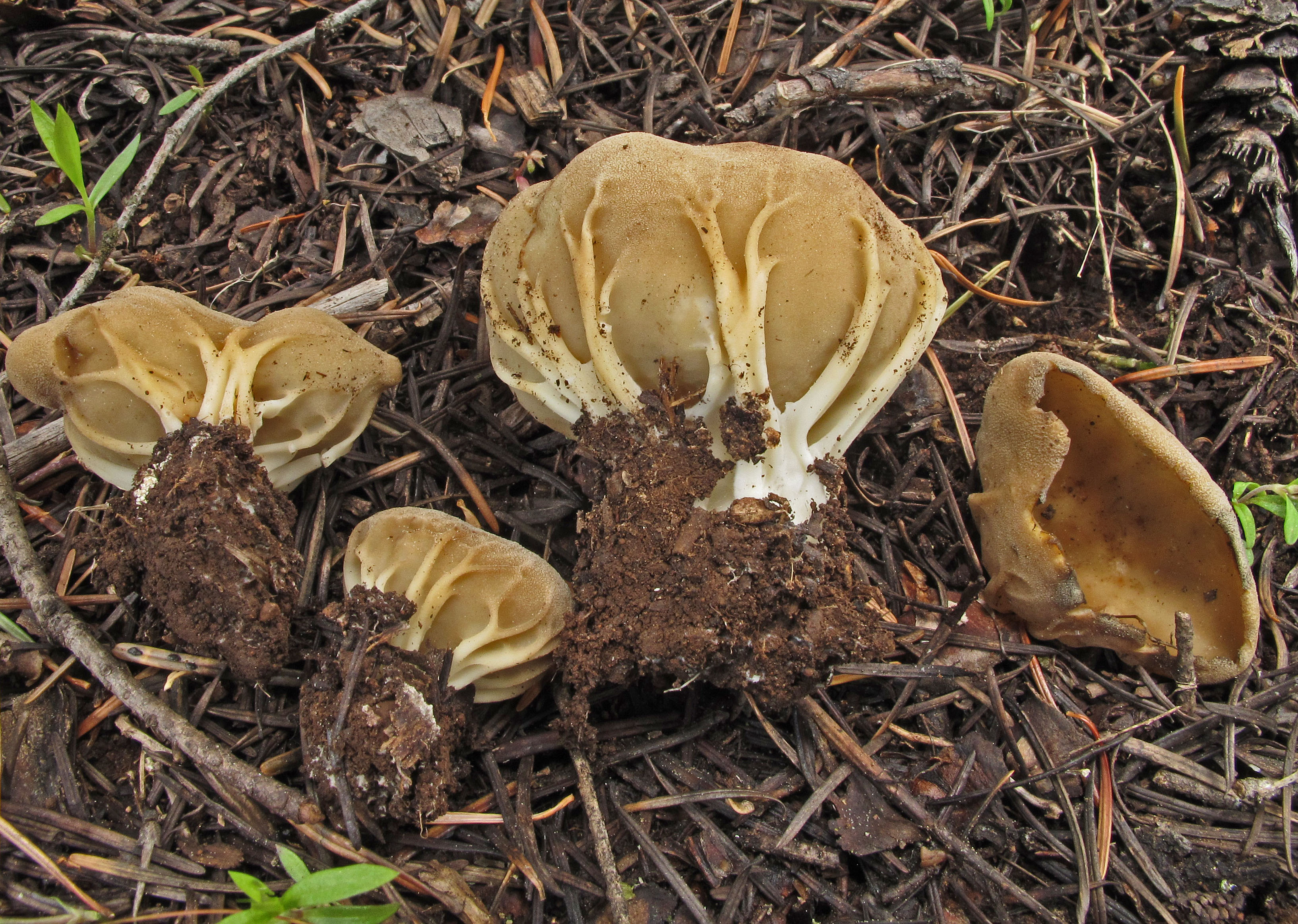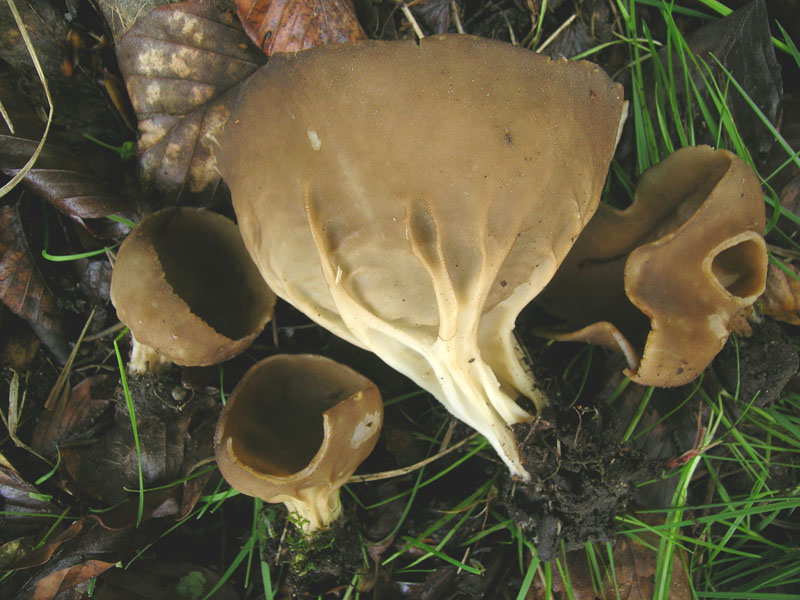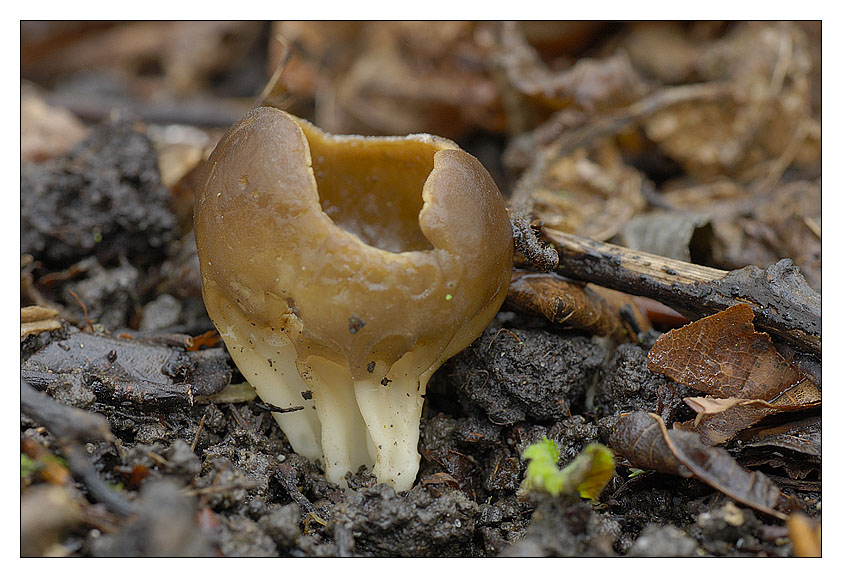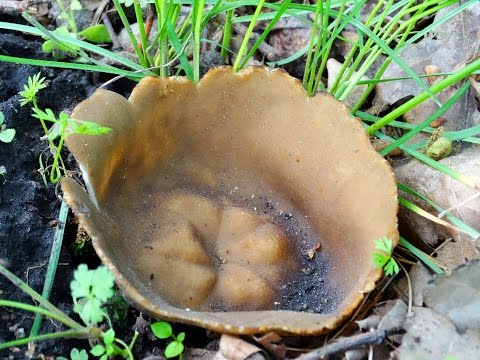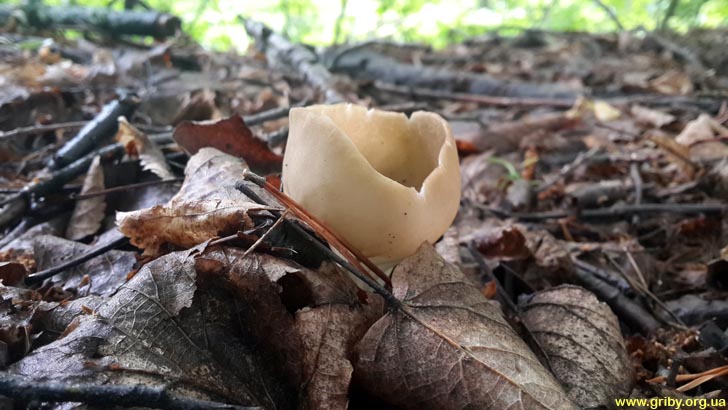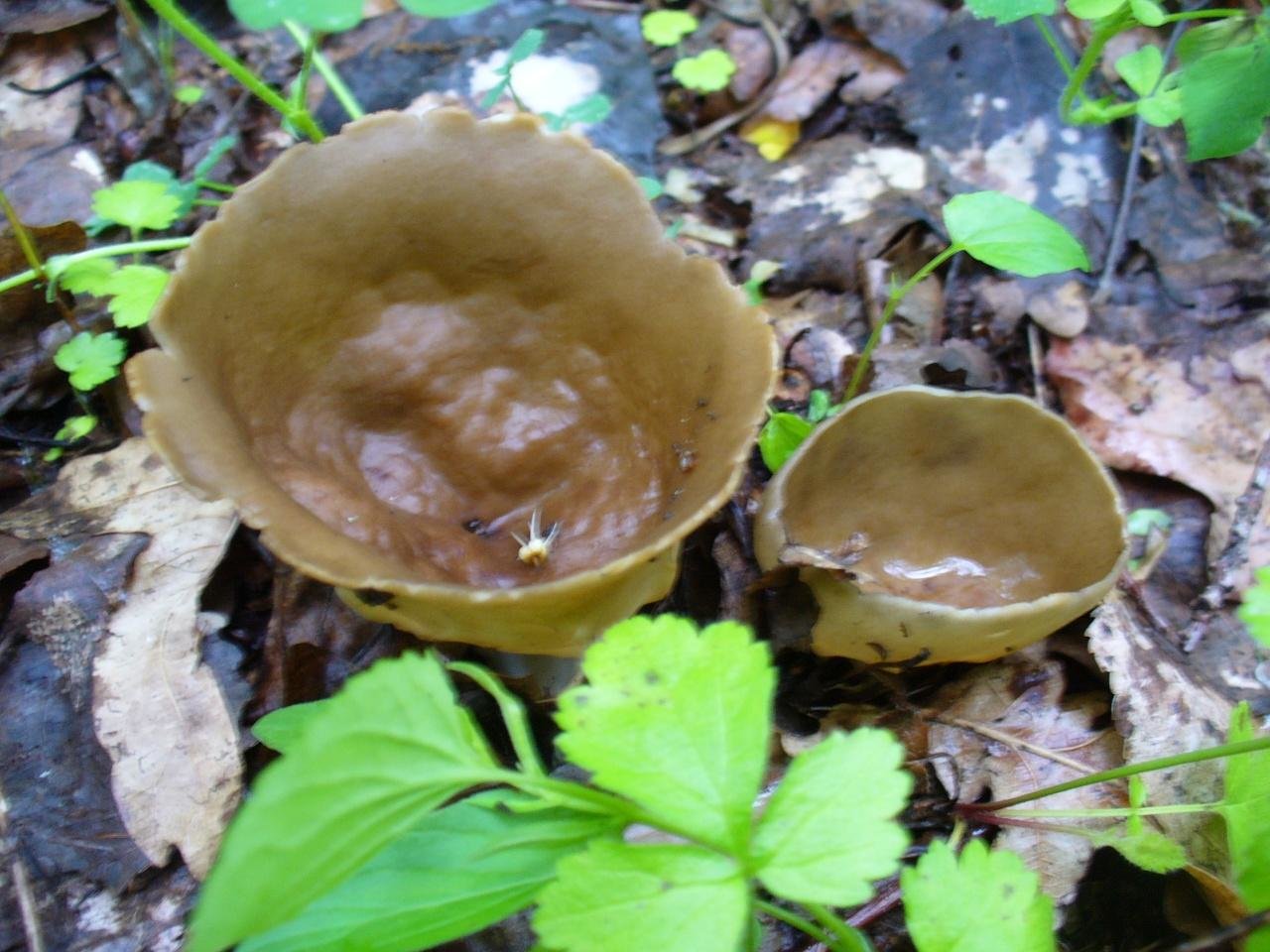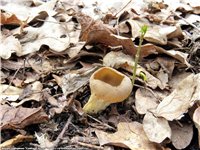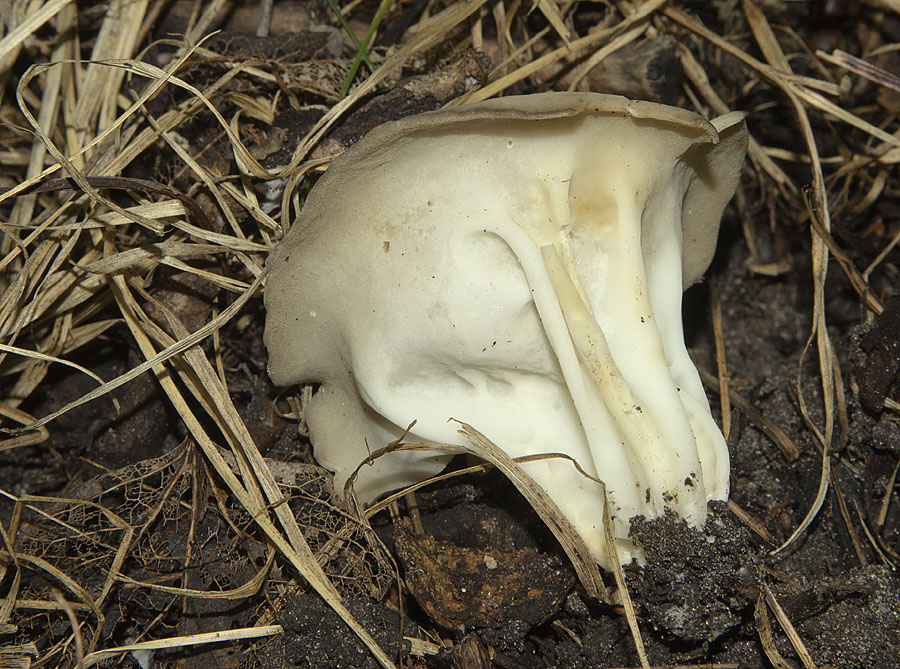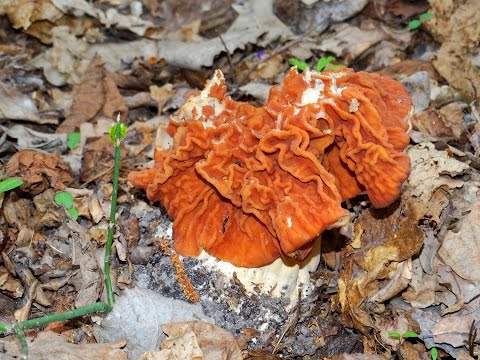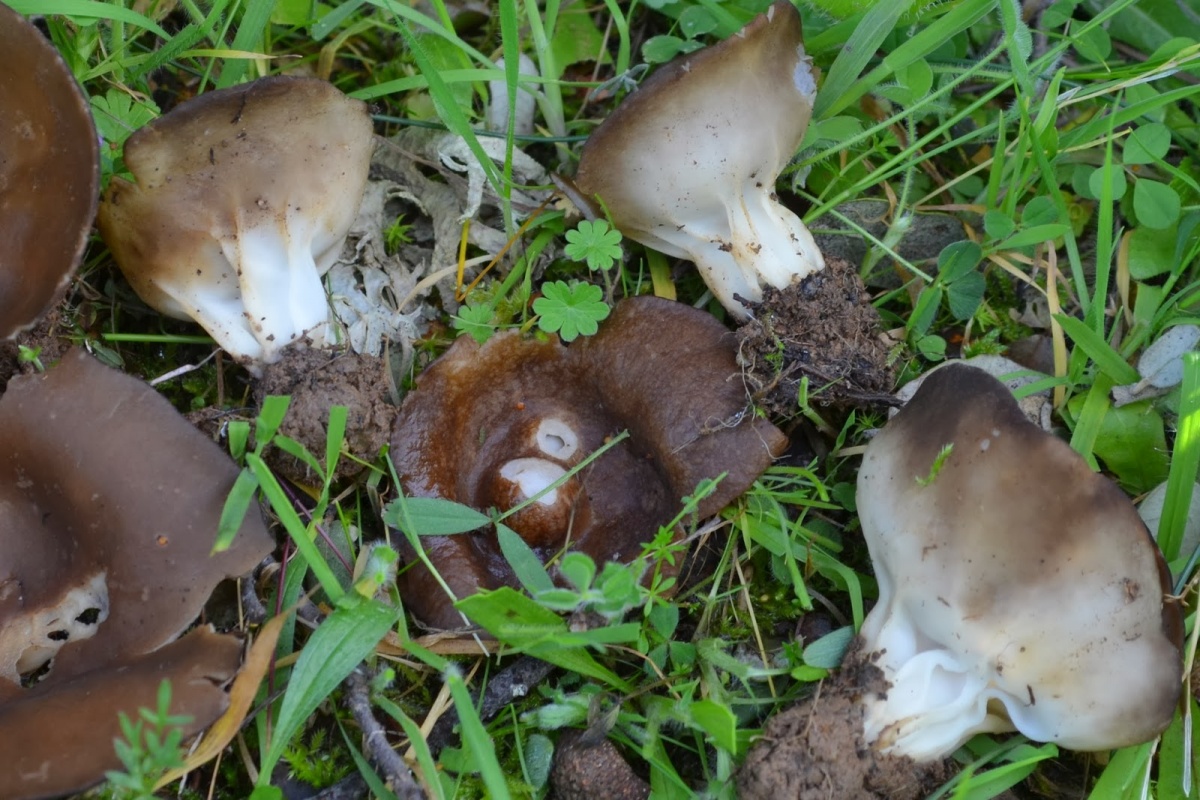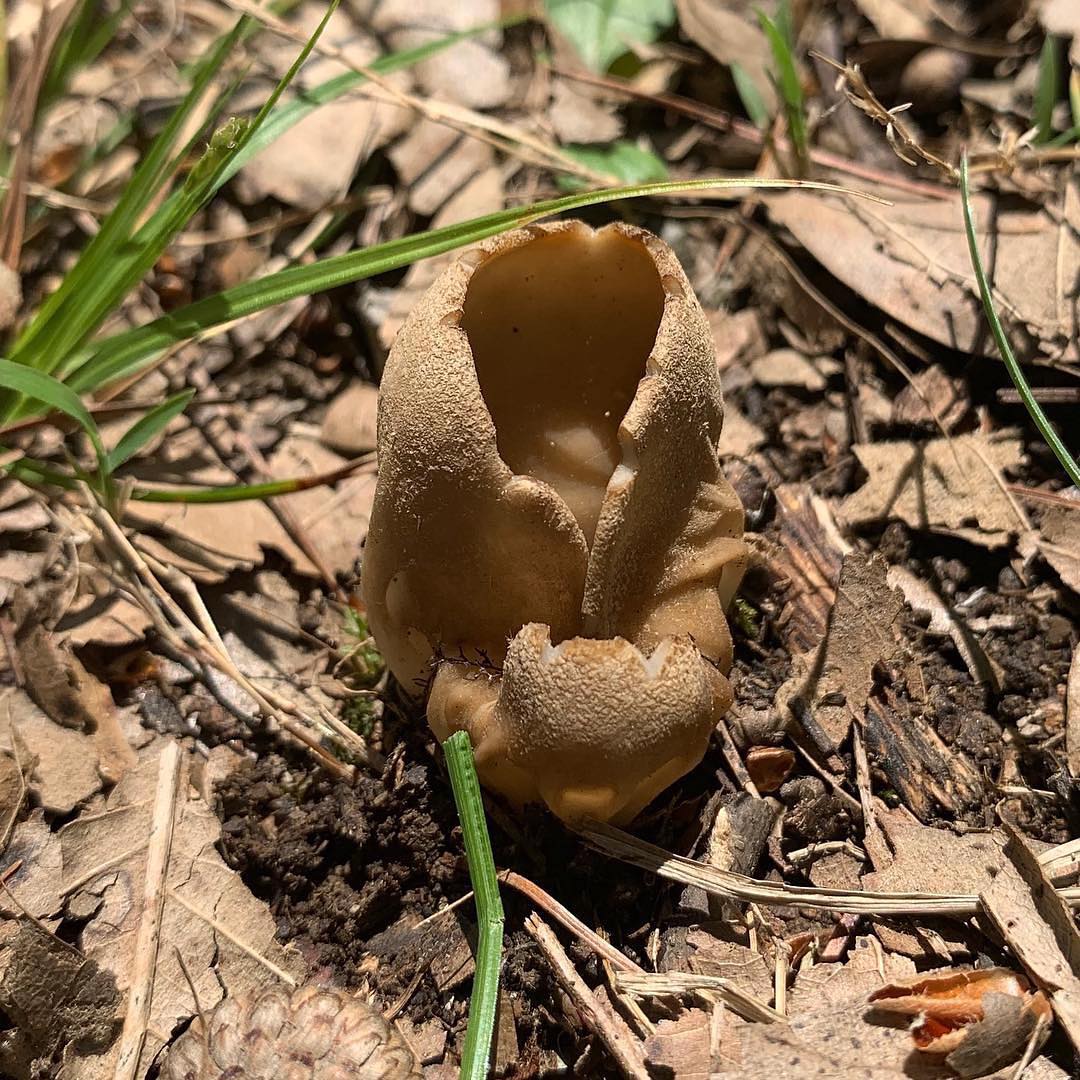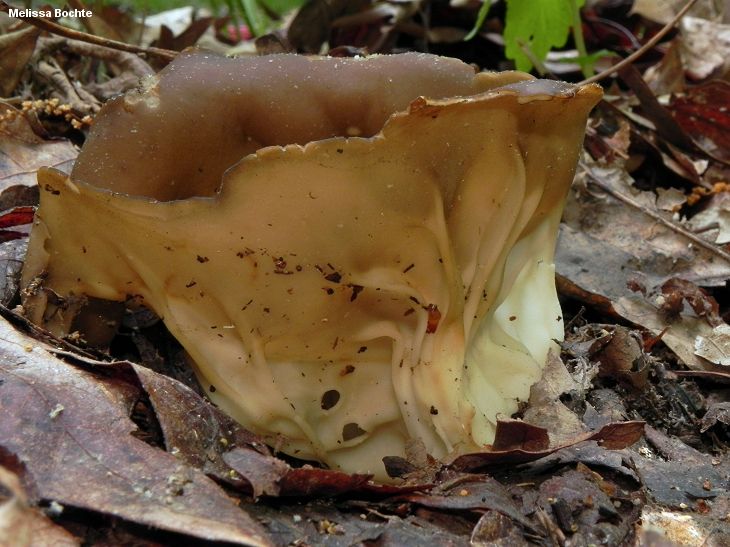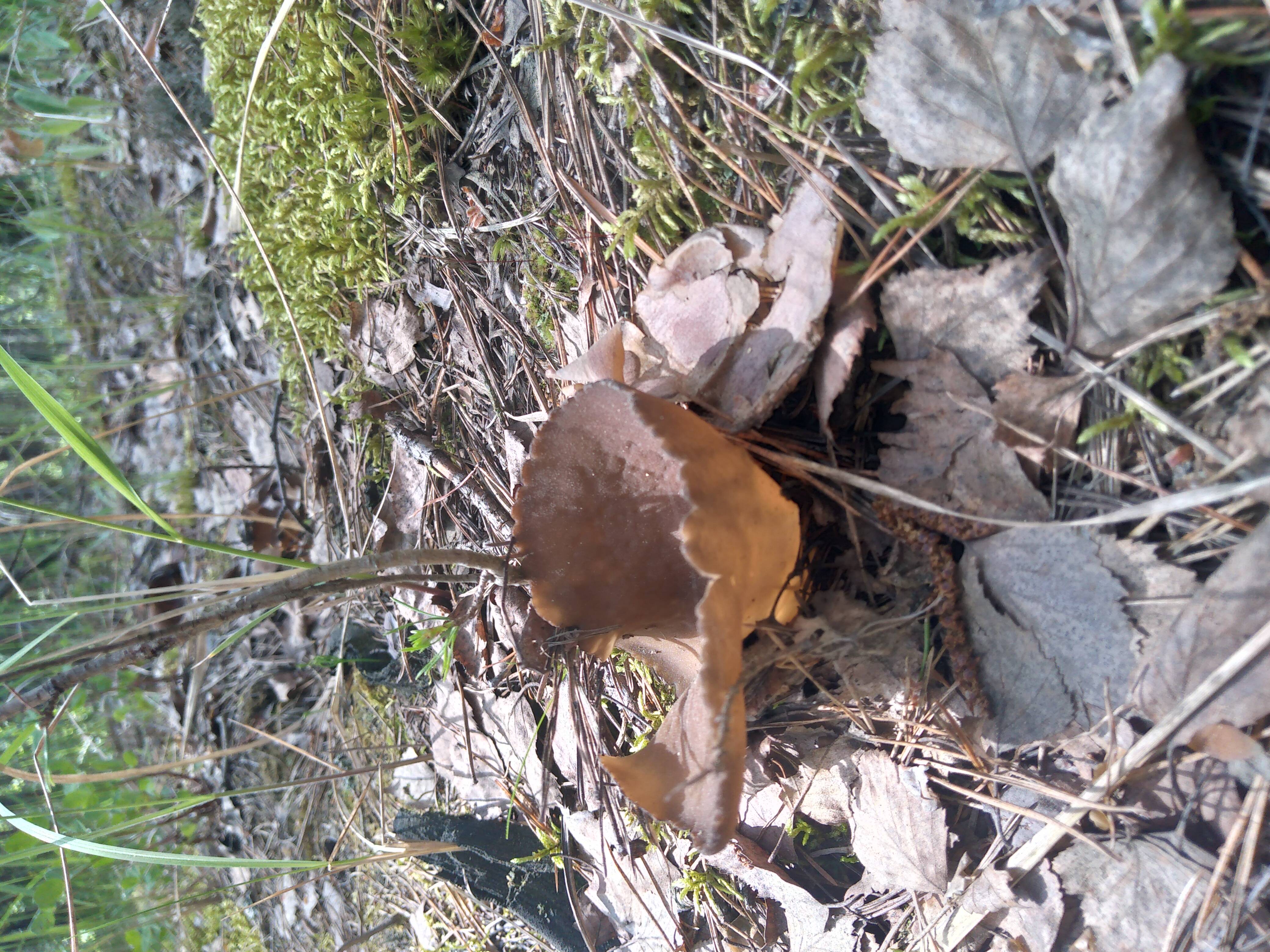Black loafer: photo and description
| Name: | Black lobe |
| Latin name: | Helvella atra |
| Type of: | Inedible |
| Specifications: |
|
| Systematics: |
|
Black lobster (Helvella atra) is a mushroom with an original appearance, belonging to the Helwell family, from the Lobster genus. Other scientific name: Black leptopodia.
Black lobe is extremely rare in our forests.
What does a black paddle look like
Only the fruiting bodies that have appeared have the appearance of a kind of saddle on a pedicle or a fractured disc. The hat has a rounded centerline fold, whose outer corners are noticeably raised above the horizontal. The halves of the cap are strongly lowered down almost in a straight line or slightly rounded inward, the edge is often accreted to the stem. As it develops, the surface bends in bizarre waves, changes to shapeless lumpy. The edges can be noticeably turned outward, exposing the inner surface, or, conversely, hug the leg with a kind of cape.
The surface is matt, dry, slightly velvety. Gray to dark gray with brown or bluish tinge and shapeless blue and black spots. The color may darken to brownish black. Inner surface, hymenium, smooth or slightly wrinkled, with pronounced bristles, brownish or gray in color. The pulp is brittle, loose, tasteless. Its color is transparent gray, like wax. The diameter can be from 0.8 to 3.2 cm. The spore powder is white.
The leg is cylindrical, expanding towards the root. Dry, pubescent in the upper part, with longitudinal stripes. The color is uneven, noticeably lighter at the base. Color from beige, gray-cream to dirty bluish and ocher-black. The length is from 2.5 to 5.5 cm, the diameter is 0.4-1.2 cm.
Legs are often crooked, with shapeless dents
Where do black blades grow
Distributed in Japan and China, where it was first found and described. Then it was discovered on the American continent and in other regions of Eurasia. It is extremely rare in Russia, and it is a great success to see it.
Prefers deciduous forests, birch forests. Sometimes its colonies are found in pine forests, spruce forests. It grows in large and small groups, with loosely located individual mushrooms. Loves dry places, sandy soils, grassy meadows in gardens and parks. The mycelium bears fruit from June to October.
The black lobe feels great on rocky areas.
Is it possible to eat black blades
Black lobster is classified as an inedible mushroom due to its low nutritional value. There is no scientific data on its toxicity. It can be confused with other members of the Helwell species.
Lobules are pitched. Inedible. It has a larger size, fleshy thick leg.
The legs of these fruiting bodies have a characteristic cellular shape.
Lobule petsytsevidny. Inedible. It differs in a noticeably upward-curled edge of the cap.
The flesh of the cap is so thin that it shines through
White-legged lobe. Inedible, toxic. It has a pure white or yellowish stem, a light hymenium coloration and a blue-black cap.
Conclusion
Black lobster is an interesting rare mushroom from the Helwell family, a fairly close relative of pets. Inedible, according to some reports, toxic. It has an extremely low nutritional value, so you shouldn't risk your health. In Russia, several colonies of this fungus have been found in the region of Novosibirsk. Its habitat is China, Europe, North and South America. Grows in deciduous, sometimes coniferous forests from early June to mid-October.
Description [| code]
Fruiting bodies - cupped apothecia 2-8 cm in diameter on a short ribbed stalk. Internal spore-bearing surface - hymenophore - "bowls" of varying intensity of brown. Leg 1-7 cm in height, often rather weakly expressed, 1-2.5 cm thick, ribbed. The ribs of the legs extend considerably onto the walls of the "bowl". The color of the outer side of the fruiting bodies is pale brown, darker at the edge of the "bowl", whitish closer to the base of the stem.
Spores are generally white. Asci cylindrical, 270–400 × 15–20 µm, contain 8 spores, each of which is unicellular, broadly elliptical, 16–22 × 11–14 µm, uncolored, with one oil drop, with smooth walls. Paraphysis septate, branching at the base, with clavate thickened ends.
Conditionally edible mushroom, fit for human consumption after boiling. Used for frying, in salads and for drying.
Similar species | code
Helvella solitaria P. Karst., 1871 - Kele lobe - is distinguished by a narrower pronounced leg and ribs that do not extend to the walls of the "bowl".
There is a whole group of closely related species that are difficult to distinguish. Due to the presence of transitional forms between them, they are sometimes considered to be one polymorphic species.
- Helvella costifera Nannf., 1953 is distinguished by a gray coloration without yellow tones, a dull ribbed stem without cavities, and a more pubescent apothecia.
- Helvella hyperborea Harmaja, 1978 is distinguished by strongly ribbed apothecia and dark pubescence. A rare northern European species.
Curly Lobster (Helvella crispa)
or
Helvella curly
Curly loafer, or Helvella crispa (lat.Helvella crispa) is a species of mushrooms belonging to the genus Lostnik, or Helvella, of the Helvellaceae family, a lectotype of the genus.
Curly loafer, among the inhabitants of the forest, is one of the few representatives of mushrooms, the Helwell family. And the word Helwella, literally translated from Latin, means: "small vegetable", "greens" or "cabbage" and, in the best possible way, characterizes the very essence of this mushroom. In Russia, the genus Helwell is called differently, they are called blades, because of the characteristic structure of their cap in the form of a propeller blade. This is especially evident in other types of helwell. In total, there are 25 species of such mushrooms and 9 of them grow in Russia. And curly lobe, among all lobules, is not the most common mushroom. A characteristic feature of all blades (helwell) is the content of a certain amount of toxins in their composition. Some of them contain the heavy toxin gyrometrin, while others contain muscarine, which can be removed from them only partially and only during the drying process. Curly lobster, as well as common lobster, is considered by some sources to be a conditionally edible mushroom with the taste of mushrooms of the fourth category. This is partly so, but ... and not so. Cases of poisoning with lobules have not yet been recorded, and the degree of poisoning with them directly depends on the number and frequency of their use. It is for this reason that curly lobe (or curly helwell) is best considered an inedible mushroom. And, therefore, it is highly undesirable to use it in food. Yes, and it is extremely rare in our area, and the taste is not at all tasty.
Curly loafer is a rather rare mushroom. And the main places of its growth can be considered deciduous and coniferous forests of Europe and the European part of Russia, in which it is found in small groups, often along forest roads and, unlike the common lobster (Helwella vulgaris), it grows not in spring, but in autumn - from the beginning of August to the end of October.
Curly loafer belongs to marsupial mushrooms, that is, its spores are located in the very body of the mushroom in the so-called "bag". His cap is folded, two to four lobed, irregular and incomprehensible in shape, with wavy or curly edges hanging down and, only in places, growing to the stem. The color of his cap is from waxy beige to pale ocher.The stem of the fungus is short, straight or slightly curved, slightly swollen at the base, with deep longitudinal grooves or folds, it is hollow inside. The color of the leg is white or ash gray. The flesh of the mushroom is thin and very brittle, waxy white in color, with a pleasant mushroom smell. But, all the same, it is not worth trying in the forest to taste curly lobe in its "raw" form!
Curly loafer - refers to conditionally edible mushrooms. (4th category)

